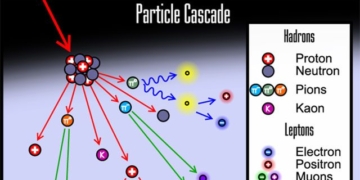The Batagay Crater, with a width of 990 meters in the Far East, is continuously expanding, with the volume of melting permafrost reaching up to one million cubic meters each year.

The Batagay Crater viewed from above. (Photo: Alexander Kizyakov).
Known as the “Gateway to Hell,” the massive crater in Siberia is expanding by one million cubic meters each year as the permafrost melts, according to a study published in the journal Geomorphology, reported by Live Science on May 6. The crater named Batagay (or Batagaika) features a circular cliff that was first discovered through satellite imagery in 1991 after a portion of the hillside collapsed in the Yana Uplands region of northern Yakutia, Russia. The exposed permafrost is part of a hillside that has been frozen for 650,000 years, making it the oldest permafrost in Siberia and the second oldest in the world.
Recent research indicates that the cliff face of the Batagay Crater is gradually retreating at a rate of 12 meters per year due to the thawing of the frozen ground. The collapsed section of the hillside, which is 55 meters lower than the cliff face, is also rapidly melting and subsiding.
Fast-thawing regions are spreading and increasing in the Arctic, as well as in areas with significant ice near the Arctic, according to the research team led by scientist Alexander I. Kizyakov from Lomonosov Moscow State University. However, the amount of ice and sediments lost from the Batagay Crater is particularly high due to the massive size of the depression, which spans 990 meters as of 2023.
The crater measured 790 meters in width in 2014, increasing by an additional 200 meters in less than ten years. Researchers were aware of its expansion, but this is the first time they have calculated the volume of melting permafrost at the crater. They accomplished this through satellite imagery analysis, field measurements, and laboratory data using samples from Batagay.
The findings indicate that the volume of ice and sediments lost is equivalent to more than 14 Great Pyramids of Giza melting at the site since its collapse. The melting rate has remained relatively stable over the past decade, primarily occurring along the cliff face at the western, southern, and southeastern edges of the crater.




















































